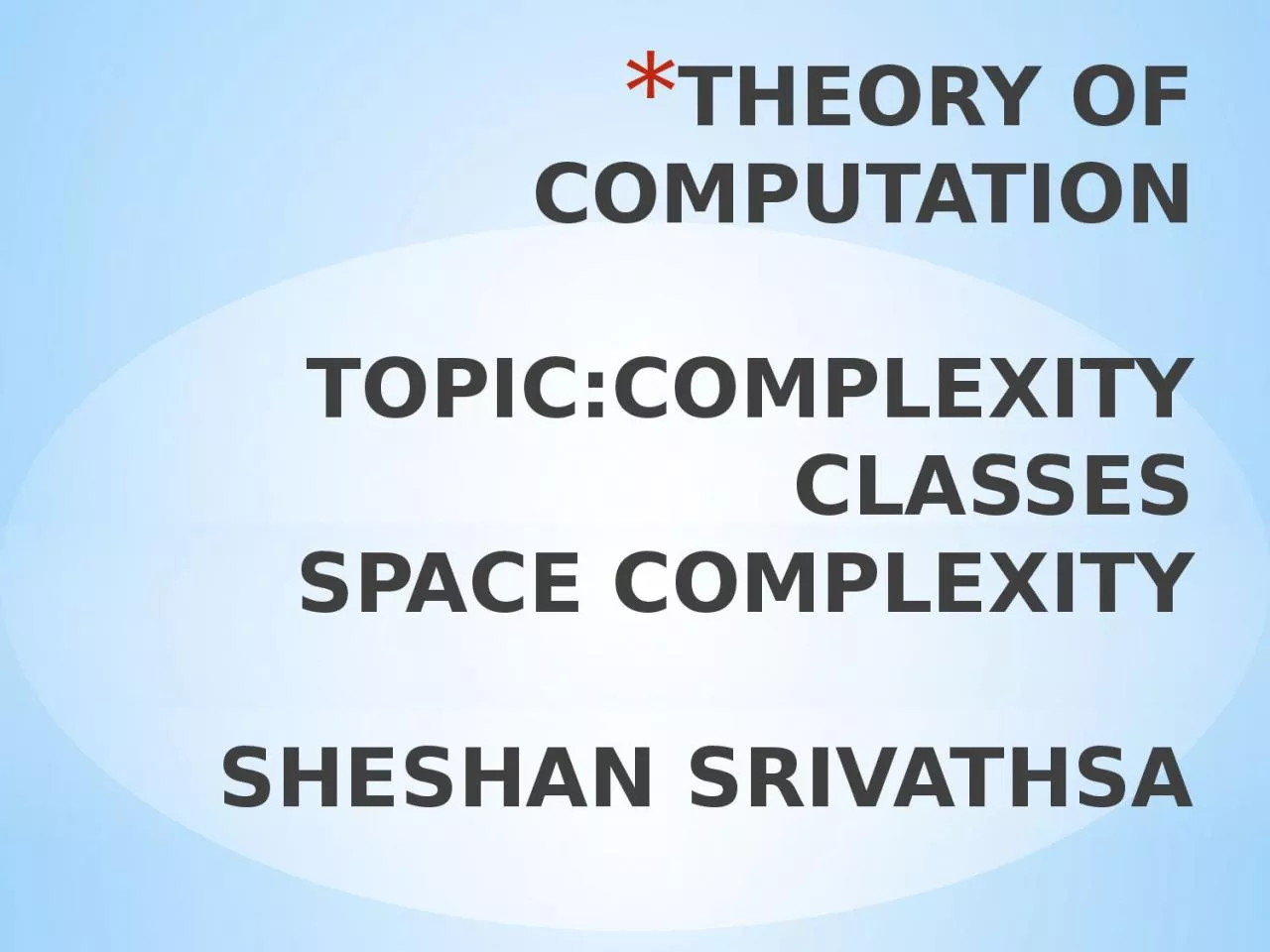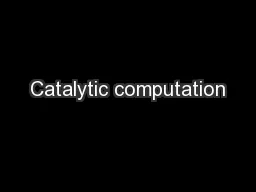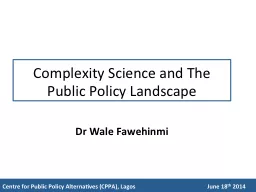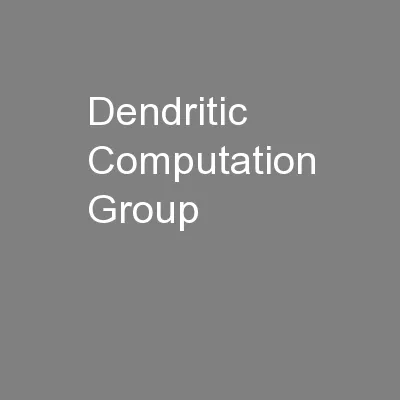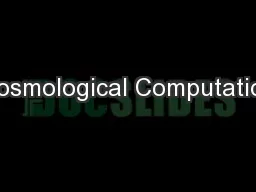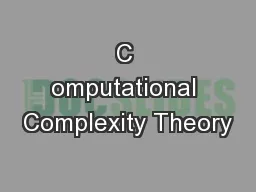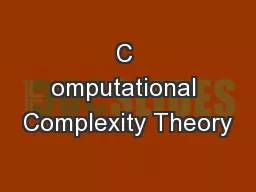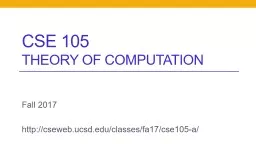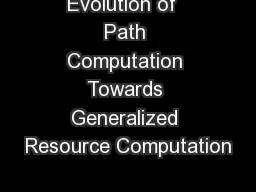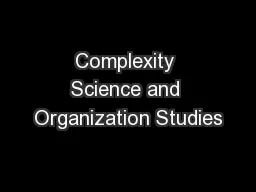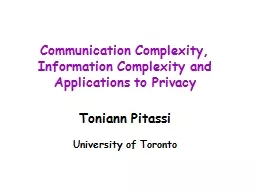PPT-THEORY OF COMPUTATION TOPIC:COMPLEXITY CLASSES
Author : cadie | Published Date : 2023-06-23
SPACE COMPLEXITY SHESHAN SRIVATHSA INTRODUCTION Definition Let M be a deterministic Turing Machine that halts on all inputs Space Complexity of M is the function
Presentation Embed Code
Download Presentation
Download Presentation The PPT/PDF document "THEORY OF COMPUTATION TOPIC:COMPLEXITY C..." is the property of its rightful owner. Permission is granted to download and print the materials on this website for personal, non-commercial use only, and to display it on your personal computer provided you do not modify the materials and that you retain all copyright notices contained in the materials. By downloading content from our website, you accept the terms of this agreement.
THEORY OF COMPUTATION TOPIC:COMPLEXITY CLASSES: Transcript
SPACE COMPLEXITY SHESHAN SRIVATHSA INTRODUCTION Definition Let M be a deterministic Turing Machine that halts on all inputs Space Complexity of M is the function fN N where fn is the maximum number of tape cells that M scans on any input of length n. How to celebrate it, leverage it, and NOT avoid it!. Are YOU sufficiently complex?. Simple = Best. FROM OCCAM’S . RAZOR. COMPLEXITY. Are YOU sufficiently complex?. Simple = Best. Simple but no. Simpler. Michal . Kouck. ý. Charles University. Based on joint work with: . H. . Buhrman. , R. Cleve, . B. . Loff. , F. . Speelman. , …. Space hierarchy. space . S. space . S’. and . Hierarchy. Concept of Complexity. “whole is more than the sum of its parts”. Holism. new properties not found in subsystems. “mechanistic explanations of emergence rejected”. Weaker view of emergence. Dr . W. ale Fawehinmi . . Centre . for Public Policy Alternatives (CPPA. ), Lagos June . 18. th. 2014. . Profile: Dr Fawehinmi . BDS. (University of Lagos, Nigeria; 1983). MBA. . (University of Leicester, UK; 2010). Graduate School Seminar. College of Business and Law. Friday December 2. nd. , 2 to 4.30. Why a specific seminar on LR?. Critical step / deliverable in PhD research. Critical skill of the researcher. Project Review 12 July 2013. Projects. Modelling. . dragonfly attention switching. Dendritic auditory processing. Processing images . with . spikes. Dendritic . computation with . memristors. . Computation in RATSLAM. Computers in a weird universe. Patrick Rall. Ph70. May 10, 2016. Advertising. “I laughed, I cried, I fell off my chair - and I was just reading the chapter on computational complexity … How is it possible for a serious book … to be so ridiculously entertaining?”. Lecture 1: . Intro; Turing machines; . Class P and NP . . . Indian Institute of Science. About the course. Computational complexity attempts . to classify computational . problems. Lecture 1: . Intro; Turing machines; . Class P and NP . . . Indian Institute of Science. About the course. Computational complexity attempts . to classify computational . problems. There are 350 tickets available! Don’t miss out—this is first-come, first-served!. When will we go?. Wednesday, Dec. 17. th. You will go to 1. st. hour, then be dismissed to eat lunch (yes, I know that’s super early!). Fall 2017. http://cseweb.ucsd.edu/classes/fa17/cse105-a/. Today's learning goals . Sipser Ch 5.1, 7 (highlights). Construct reductions from one problem to another.. Distinguish between computability and complexity. Adrian Farrel. Old Dog Consulting. adrian@olddog.co.uk. History of PCE. We know where PCE comes from. Simple CSPF computation of paths for MPLS-TE. But RFC 4655 was not quite so limited in its definition. Miles A. Zachary. Authors. Steve Maguire- McGill University. Assistant Professor of Strategy and Organization. Ph.D. at H.E.C.-Montreal (2000). Bill . McKelvey. - UCLA. Professor of Strategic Organizing and Complexity Science. Toniann. . Pitassi. University of Toronto. 2-Party Communication Complexity. [Yao]. 2-party communication: . each party has a dataset. . Goal . is to compute a function f(D. A. ,D. B. ). m. 1. m. 2.
Download Document
Here is the link to download the presentation.
"THEORY OF COMPUTATION TOPIC:COMPLEXITY CLASSES"The content belongs to its owner. You may download and print it for personal use, without modification, and keep all copyright notices. By downloading, you agree to these terms.
Related Documents

